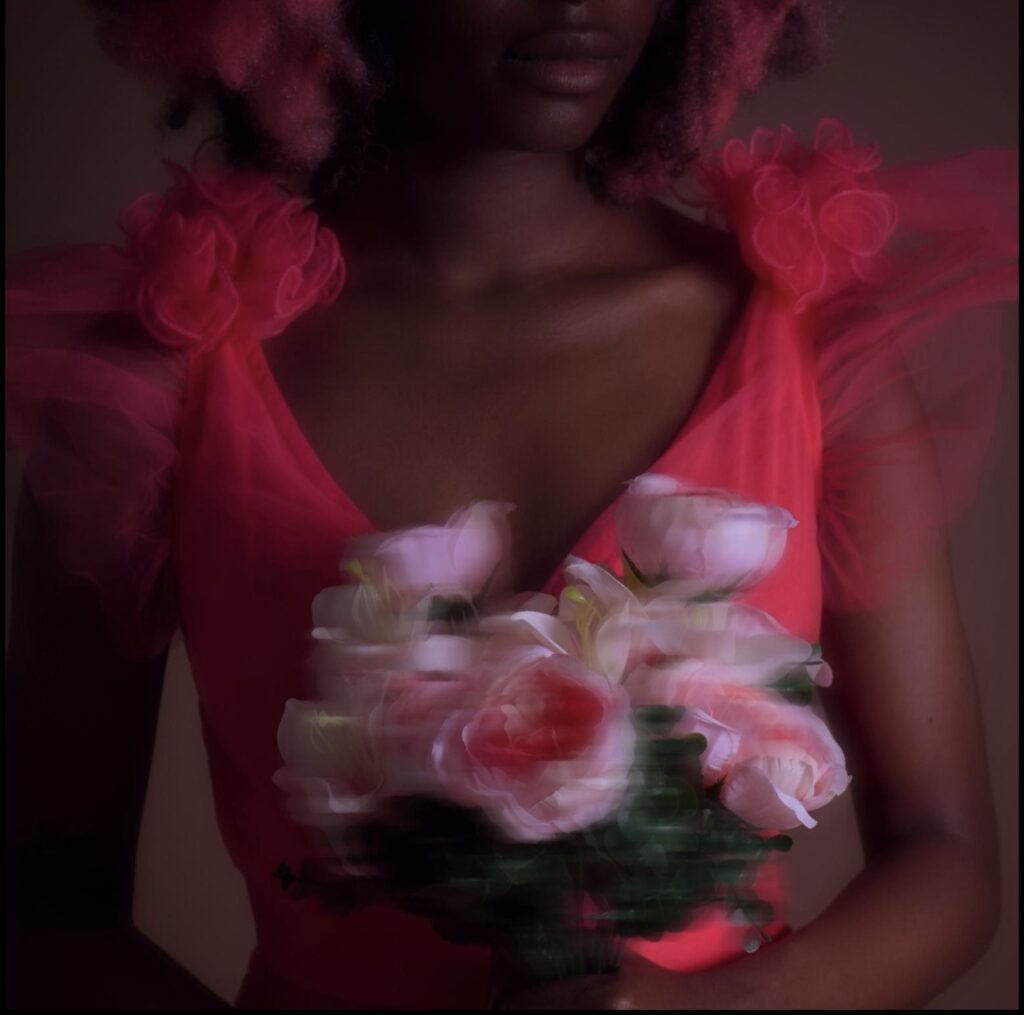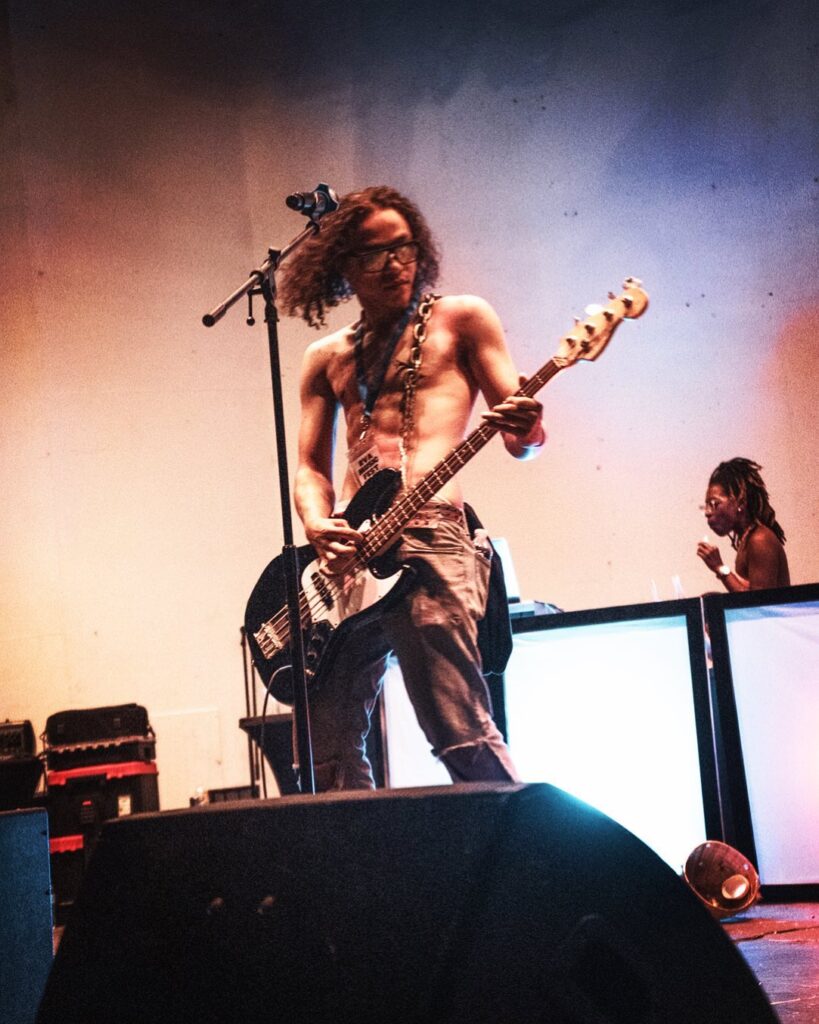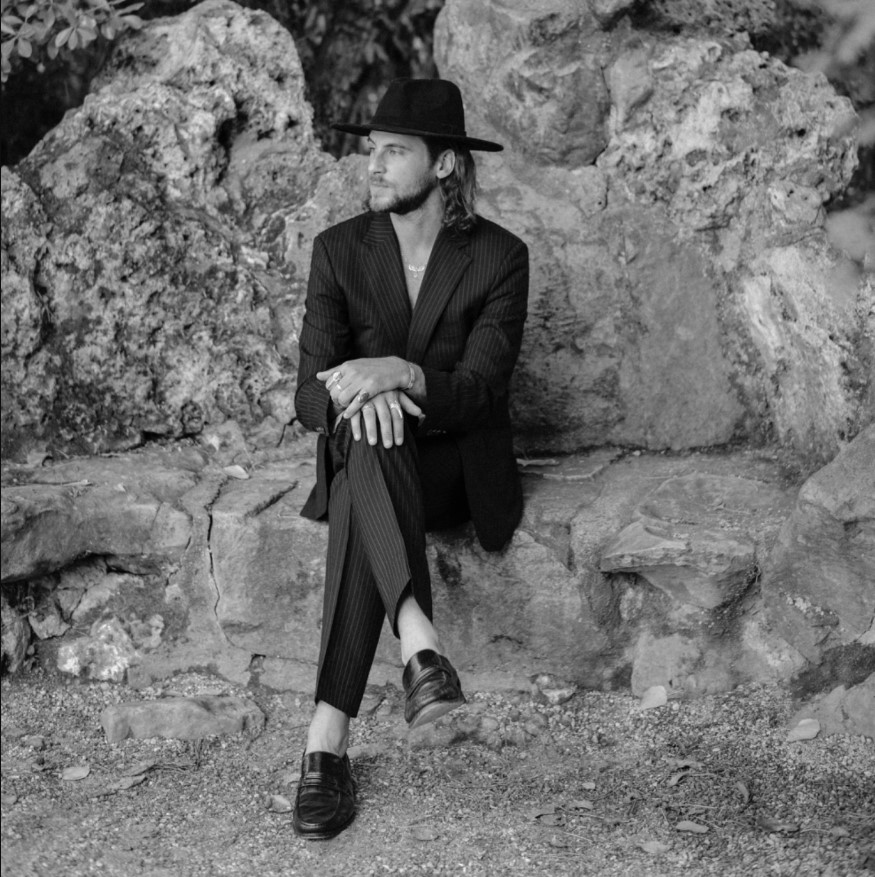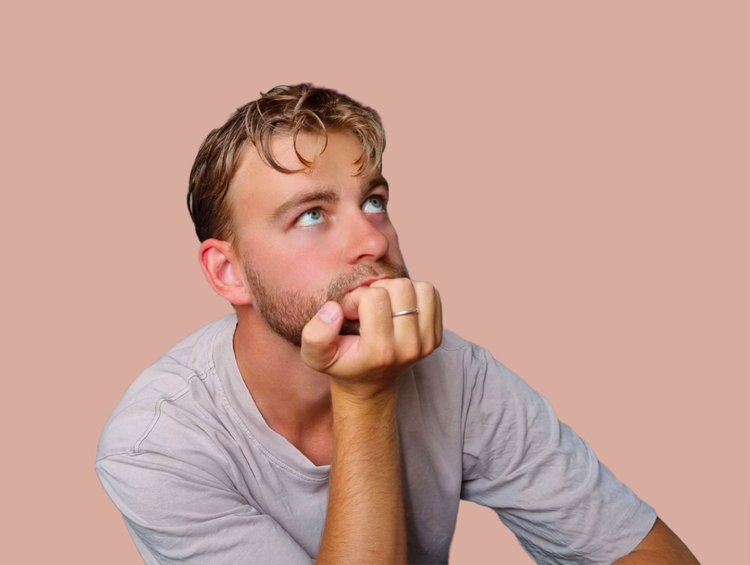A conversation with Ambrosius about “Pathways”
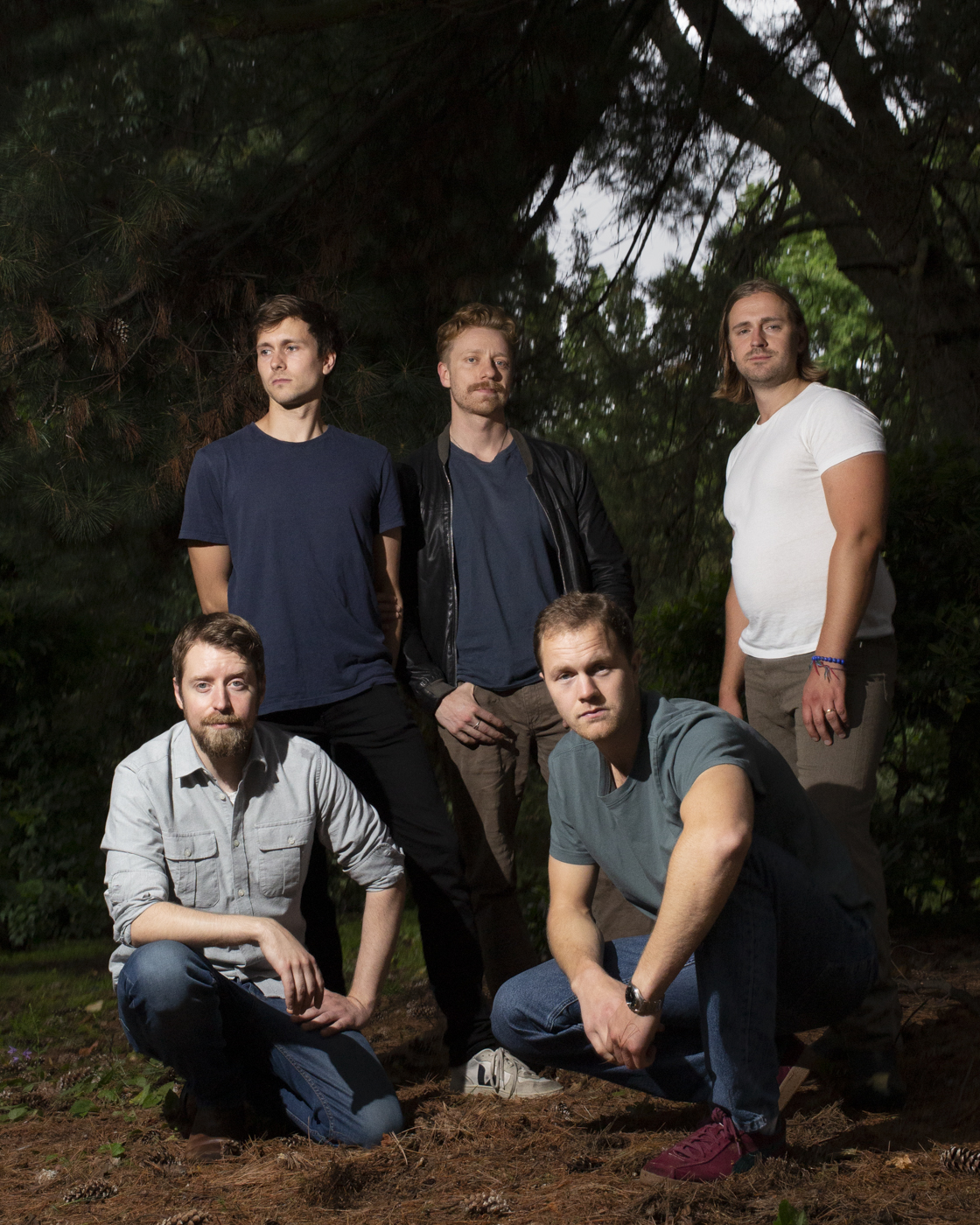
Q: Hi! “Pathways” marks a significant moment for Ambrosius as your debut album. Can you tell us about the journey and the inspiration behind this album?
A: I think the title says it all, and the entanglement that has become that specific journey could of course be described in eternity for all its details. The idea is that all the band members have a separate set of footprints that meet up in the intersection that is our band. We’ve been a band for God knows how many years, and our evolution has taken all manner of interesting turns until we culminated in playing the style we do at this point. That being said, we are constantly looking to evolve rather than stagnating into one specific genre or sound. We started off as a folk band, based on a few songs that I had written with the intention of reminiscing and riffing on the joys that came along with the 60’s folk movement. Edward Sharpe & The Magnetic Zeros were a huge influence on my writing back then. It did take a few changes to our crew until we shaped our music into the fully-fledged expression you can enjoy on our debut album. – You could consider our evolution to be a condensed version of how pop music changed from the 60’s until the 90’s, still leaving some room for impulses that could be considered timeless, or even, up to date.
Q: With tracks like “Shadow Logic” and “Hollywood Babeism,” how did you approach blending different genres and sounds to create something unique?
A: Most of us write lyrics, which is where we start off on a song more often than not. The lyric credits for the tracks on our album is brotherly shared between whoever wrote that specific song, or 3/3/3/1 (our drummer Ivar sticks to his beat making!). Each song often comes to fruition with an idea of how we want to honor and muck around with the music we love hearing ourselves, which makes each song turn out as something unique because of how it’s fused. How the songs separately shape beyond the text work is actually really simple: our bass player, Nils, really has found his groove through the disco genre, and our drummer, Ivar, immediately hooks onto those grooves. They’re the most symbiotic part of our arrangements, and if there is something unsaid between those guys, everything falls apart. Whereas our guitar player, Fredrik, a talent unsurpassed as far as bending genres goes, cleverly manages to put in an interesting mix of heavy metal and earwormy pop riffs and licks. In turn our fiddle player, Bjorn, lumps his influences into the mix, drawing heavily on his Irish folk background. Just picture it like this: if you listen to a wide variety of music, you’re inevitably going to create something new. If you mix up punk rock and Elvis, you’ve already come up with something entirely different from the two.
Q: “Anach Cuain” is an interpretation of an ancient Irish folk song. What inspired you to include this track in your album, and how did you adapt it to fit the overall style of “Pathways”?
A: So our fiddle player started playing with us back in 2018, and in his bag he had brought all the Irish folk songs he’d been taught by his fiddle teacher as a teenager back in Adelaide, Australia. We had this one song we released in 2019, “TV”, which we wanted to make into a sort of “Dark Side of the Moon” moment, and figured it would be really interesting to blend a couple of Irish tunes with our original composition. It turned out to work really well, so we’ve included quite a few of those Irish folk songs into our live sets, which has culminated with the inclusion of Anach Cuain on our debut album. It tells the true story from the 1800’s Ireland about a wedding party that leaves the shore on a boat, only for the boat to sink, the song depicting the drowning wedding party. Really a tragic story. It’s probably included because, although we’ve evolved since we first started playing together, we still have that bit of folk influence sewn into our fabric. We think that is probably why it has blended well enough for it to stand out on the album, while it also fits with the rest.
Q: The album cover art by Tetiana Kaliuzhna is quite intriguing, featuring the imprint of each artist’s fingerprint. How does this artwork reflect the theme and essence of “Pathways”?
A: Of course only Tetiana can tell us from what place within herself she inspired to do this piece of artwork, but it might clarify things if you look at how I’ve described this metaphor of the band as an intersection of trails. It seems like she has transferred this image into something even more personal, which is one single fingerprint assembled from each band member’s fingerprint, also enhancing each part with a different color. Tetiana showed us another version which excluded the pink and orange shade, but we all agreed that even though that version was cleaner and seemingly more right as to our expression, the one we included for our album felt more right. I guess you have it right there: intuition leads you to a certain place, even though you have a distinct voice telling you where your identity lies. It’s also interesting that the ultimate choice fell on the option we all somehow discussed ourselves into favoring. “Pink is the new black”, one of us concluded.
Q: You’ve transformed an office space in Oslo into your creative hub. How has this unique setting influenced the creation of “Pathways”?
A: This is quite a common way suburban environments of Oslo have been reworked in this day and age, actually. So a lot of the tech companies from the 90’s held their offices down in these corners of the capital, and today these buildings serve as rehearsal spaces for a ton of bands. I think the buildings will all eventually get pulled down and turned into residencies at some point. However, there is something inspiring about being able to see one’s city from the angles of past, present and future: times they are a changin’, Dylan famously sang, and we could be compared to office clerks when put in that environment, with tons of other bands working at a hobby or professional level. We’ve managed to pimp it up by inserting a couch, removing a few armature lamps and having elements that tie the room together, like a persian rug, a mini fridge and a limited selection of books and vinyl we like to pass off as the local library.
Q: Signing with FAJo Music in 2023 was a significant step for Ambrosius. How has this partnership impacted the development and production of your new album?
A: First of all, signing a record deal, and a relatively fair one like a license contract at that, gives you the right resources to work on what matters: the composition, story–telling and dynamics between the band members. We also get valuable input from the professionals in the business, and a lot of decisions are made on a back and forth and back feedback system. Also, that pat on the back serves a specific purpose: they know you’re good! They think you can pull off an entire album and make money on it! They believe in us! Wow! Two of the songs, Align and Nancy Tales, were written as a result of knowing we needed to be good, and feeding off that buzz of thankfulness and sincerity.
Q: The track “Noel’s Caravan” is a tribute to radio theatre. Could you elaborate on the concept behind this skit and its significance in the album?
A: So “Noel’s Caravan” is a skit that was born out of our song “Open Tab”. That song is written as an ode to the glorious hours spent in the company of drinking buddies, and we figured we should have atmospheric sounds from a pub environment. So a gang of four went down to the Irish pub “The Dubliner” in Oslo during an Irish folk music festival, and we managed to capture some pretty cool moments that we were so lucky to fit together. We managed to record this crazy laugh from a man right next to us, right after he spat out the famous last words, “We had a hell of a night!”. Coming from a theatre background, I saw this as an opportunity to create something unique within those parameters: how can you make a sound clip depicting someone entering a bar, ordering a beer, eavesdropping in on the next table and cheering into some nonsense commercial tune like “Noel’s Caravan”? We did not only include some bar banter in between the notes of Open Tab: it totally deserved its own attention as a separate track!
Q: “Pathways” is described as a cohesive whole that shines as brightly as it challenges. Can you elaborate on the process of weaving these twelve tracks into a unified musical journey?
A: The process of finding the right way to sequence the tracks is more work than one can imagine. My notebook is filled with pages and pages of suggestions of how to place the tracks in the right order. How to build the perfect roller-coaster for the listener. We’ve argued about which song is the best and have tried arranging them accordingly, also figuring out how to make a fantastic alignment based on the classic three act model of Aristotle. We’ve had surprise moments after the release when songs some thought would be better off hidden inbetween the good songs, turned out to be real crowd pleasers. Another element of intricacy is added to this: since most of the songs have a way of standing out for some reason or the other, our producer, Ole Dahl (Auran-Studio), has done formidable work finding the right sound for all of the songs to make sense as a whole. “Open Tab” is a classic folk song, “Goodbye” is a crooner’s affair, “Razor Burn” is probably the darkest and edgiest song on the album, whereas “Align”’s synthy and most modern expression exits with a jazzy interlude with horn arrangements. Somehow Ole has made them fit together perfectly!
Q: Your lyrics are said to oscillate between the earthy and the cosmic. How do you balance these themes, and what role do they play in the storytelling of the album?
A: You can sit by your kitchen table in the morning looking out of the foggy window and still get hit in the face by the complexity of life. You don’t have to look at the stars to be dumbstruck by the mysteries of the universe, and combining that with the minute details that are so insignificant you would pass them by unless they were accompanied by that feeling of unity with being alive: the tumble dryer pounding against the bedroom wall. The application of one’s lipstick by the mirror on a dimly lit lady’s room. Most people are actually able to access such a way of absorbing life for all its beauty and pain, but we restrain ourselves in our everyday life. Maybe you can consider Ambrosius a portal to an astral way of thinking and feeling?
Q: As a band, how do you feel “Pathways” represents your core musical identity, and in what ways does it push the boundaries of your artistic expression?
A: We have managed to work on those ten originally composed songs with a clear mind as to where we wanted to land them separately as well as as a unit. And although all songs inevitably carry similarities, they all seem to come from a separate place within each and one of us, a different pathway of life. We are happy with how all the songs carry different voices and opinions. We are not political in expression, but I do sincerely believe stories carry a solution to certain problems we humans face, individually and collectively. As the complete album has come into realization, we sit with a whole new impression of how we might concoct our coming adventures, and are already working on new songs, looking forward to the next chapter of the story.


